While Connecticut is known for its majestic white winters, its summers are also beautiful, with many visitors flocking to its shoreline, rivers, lakes, and streams. However, severe weather, like extreme heat, can easily disrupt summer fun.
But where is the hottest place in Connecticut?
Continue reading to find out how hot it gets in the state and everything you need to know about Connecticut’s hottest city.
The Hottest Place in Connecticut
Danbury is the hottest place in Connecticut, with an average maximum summer temperature of 84 degrees Fahrenheit. Furthermore, it has an average minimum summer temperature of 61.5 degrees Fahrenheit.
There are usually around 16 days per year where temperatures in Danbury exceed 90℉ and one day annually where temperatures rise over 100 degrees! In fact, the highest temperature ever recorded in the city was a whopping 106 degrees on July 15th, 1995.
Summers in Danbury consist of long days and warm temperatures, making it the perfect place for outdoor activities like boating, swimming, hiking, and picnicking. In addition, Danbury offers a variety of recreational areas, like lakes, golf courses, and parks.
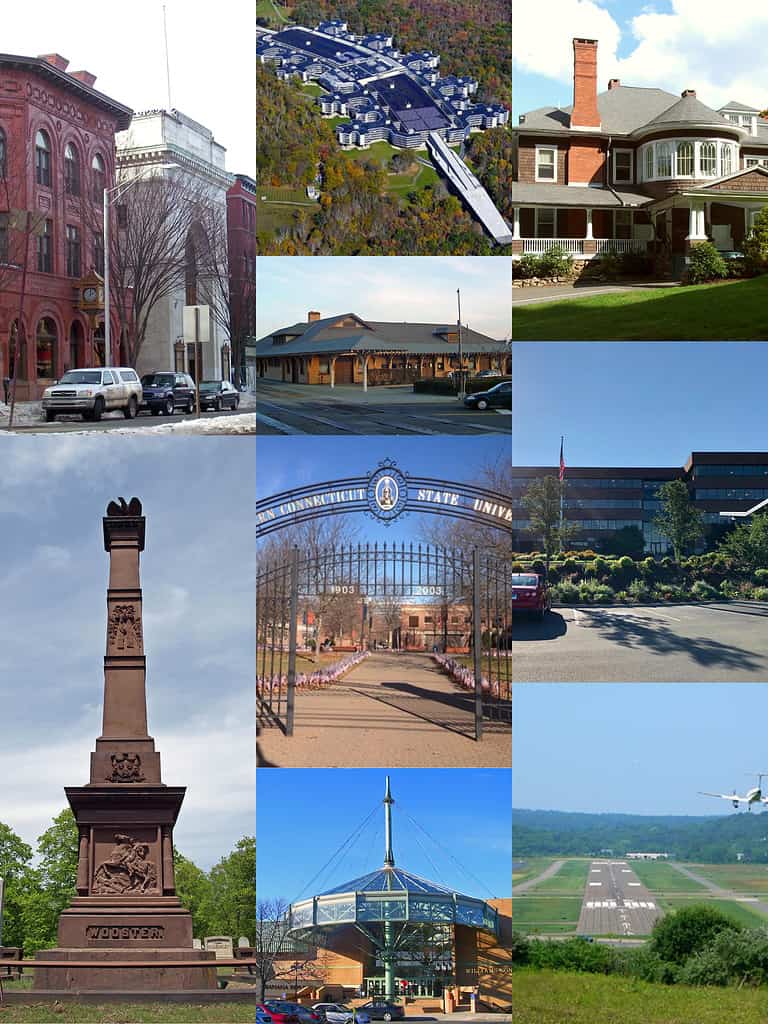
Danbury is the hottest place in Connecticut, with an average maximum summer temperature of 84 degrees Fahrenheit.
©AirportExpert / CC BY-SA 4.0 – License
Danbury, Connecticut: History
Located in southwest Connecticut, Danbury sits on the Still River in Fairfield County. While it was named in 1687, Danbury was incorporated in 1702 and officially chartered as a city in 1889. The city has a significant history as it served as a supply depot for the Continental Army during the Revolutionary War. Additionally, Danbury was raided by the British in 1777, led by Major General William Tryon.
This city was notorious for the quality of beans that grew there, so it was nicknamed Beantown. However, that soon changed during the 1900s when it became the center of America’s hat production, earning the nickname Hat City. But currently, Danbury is known for making machinery, electronic equipment, and furniture. Furthermore, it boasts the beautiful Western Connecticut State University.
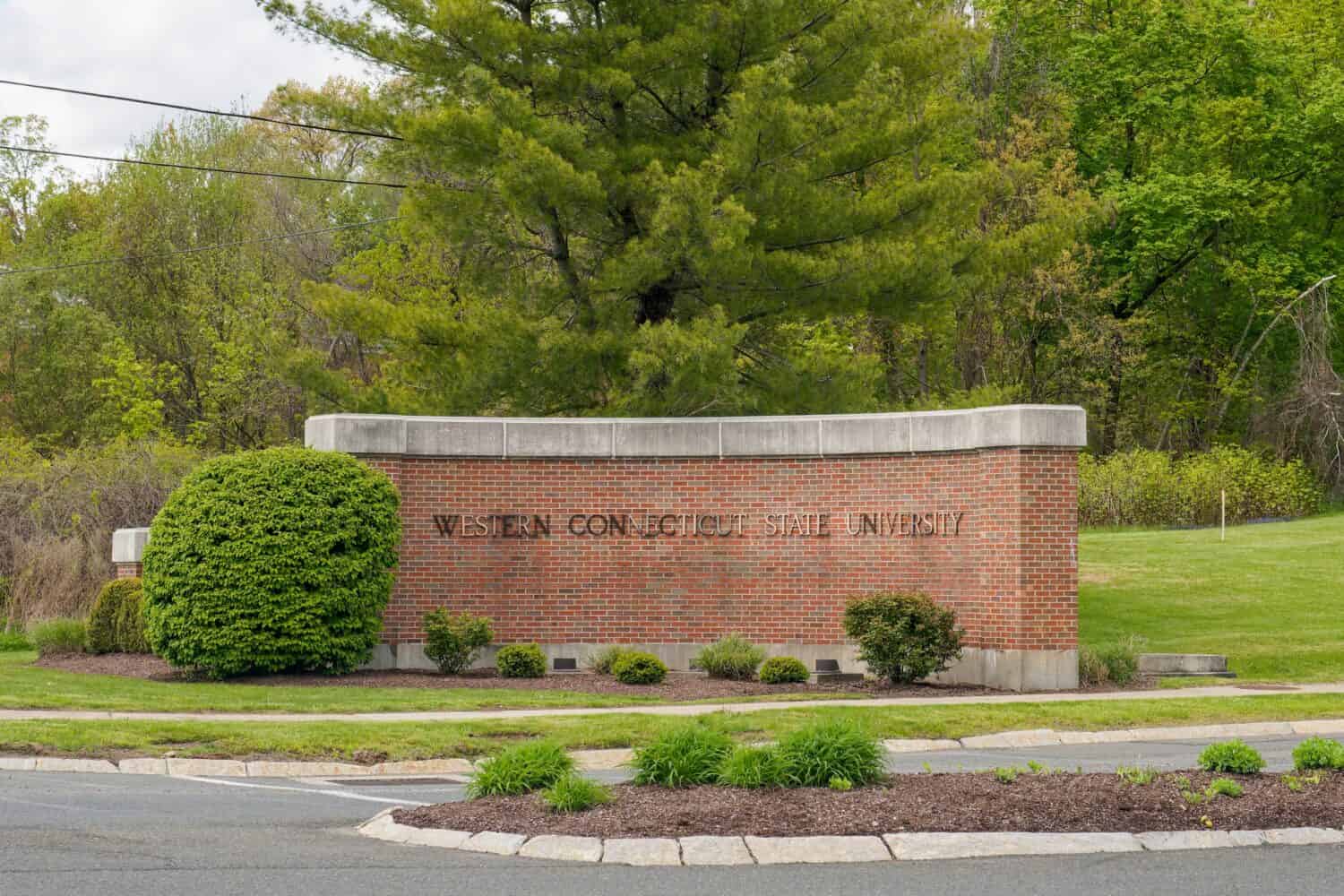
Currently, Danbury is known for making machinery, electronic equipment, and furniture. Furthermore, it boasts the beautiful Western Connecticut State University.
Image: Rosemarie Mosteller, Shutterstock
©Rosemarie Mosteller/Shutterstock.com
The Population of the Hottest Place in Connecticut
According to the Census Bureau, Danbury’s population was 86,967 in 2022. The city covers an area of 41.9 square miles, making it the 401st largest city in the United States. Furthermore, it is the largest city by area in the state. Since 2000, Danbury has grown by 15.5%. The population density of Danbury is 1,931 people per square mile.
Wildlife in Danbury, Connecticut
There is plenty of wildlife in and around the hottest place in Connecticut, thanks to its lush foliage and many water sources. Animals in the area include:
Where is Danbury Located on a Map?
Danbury is located in Fairfield County, Connecticut. It lies about 50 miles to the northeast of New York City.
In fact, in 2020, Danbury’s population stood at 86,518, making it the third-largest city in Western Connecticut and the seventh-largest city in the state of Connecticut.
Here it is on a map:
White-tailed Deer
One of the most commonly sighted animals in Connecticut is the white-tailed deer. They feed on acorns, green plants, tree nuts, or plants from people’s gardens. In winter, they must limit their diet and browse on buds, twigs, and bark. Unfortunately, their population numbers are out of control in the state because humans drove away all their natural predators. And hunters are struggling to keep their numbers down on their own.
But why are high population numbers dangerous? These deer can cause significant damage to shrubs, vegetables, ornamental trees, flowers, and native plants. In addition, they pose a threat to human safety, as there are many deer-vehicle collisions, especially during mating season. Lastly, white-tailed deer can spread ticks that cause Lyme disease.

One of the most commonly sighted animals in Connecticut is the white-tailed deer. They feed on acorns, green plants, tree nuts, or plants from people’s gardens.
©Jim Cumming/Shutterstock.com
Coyote
Coyotes did not originate in Connecticut. They replaced the wolves in the state after they were overhunted in the 1700s. These stealthy predators are better suited to survive in Connecticut since they can adapt to almost any situation, including coexisting with humans.
Coyotes don’t typically pose a threat to adult humans. But they are opportunistic hunters and can attack small children or pets. In fact, attacks are on the rise in areas where these canines are exposed to humans.
Furthermore, they are also carriers of rabies, so they can become rapid and extremely dangerous.
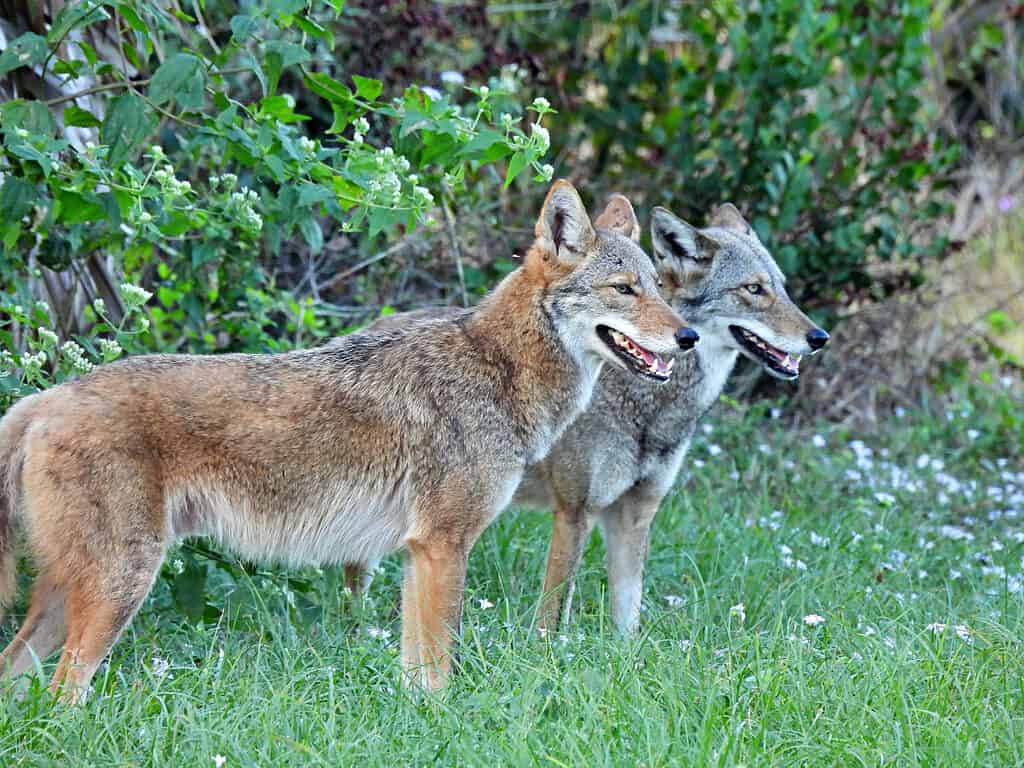
Coyotes did not originate in Connecticut. They replaced the wolves in the state after they were overhunted in the 1700s.
©iStock.com/passion4nature
Woodchuck
The woodchuck occurs throughout Connecticut as it has a wide variety of habitats, like woodlots, meadows, pastures, fields, idle fields, hedgerows, suburbs, and parks. They like building their dens under barns, porches, sheds, decks, stone walls, wood piles, near fence rows or woodland edges, or open fields.
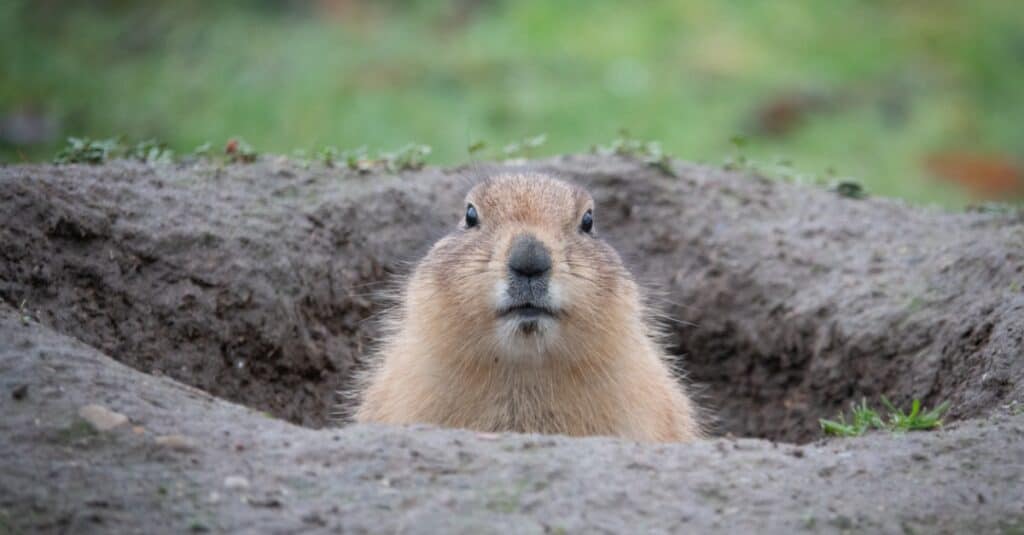
The woodchuck occurs throughout Connecticut as it has a wide variety of habitats, like woodlots, meadows, pastures, fields, idle fields, hedgerows, suburbs, and parks.
©iStock.com/undefined undefined
Cottontail Rabbit
Connecticut is full of cottontail rabbits, they occur in every corner of the state, and their numbers are increasing each year. Additionally, they occur throughout the eastern and central regions of the United States.
These rabbits prefer overgrown fields, brushy areas, and the edges of open woods. Cottontails are active year-round and usually come out of their burrows at dawn and dusk. Their summer diet usually consists of several herbaceous and garden plants if they can get into people’s yards.
However, a 3-foot high fence with two-inch by two-inch mesh will keep them out.
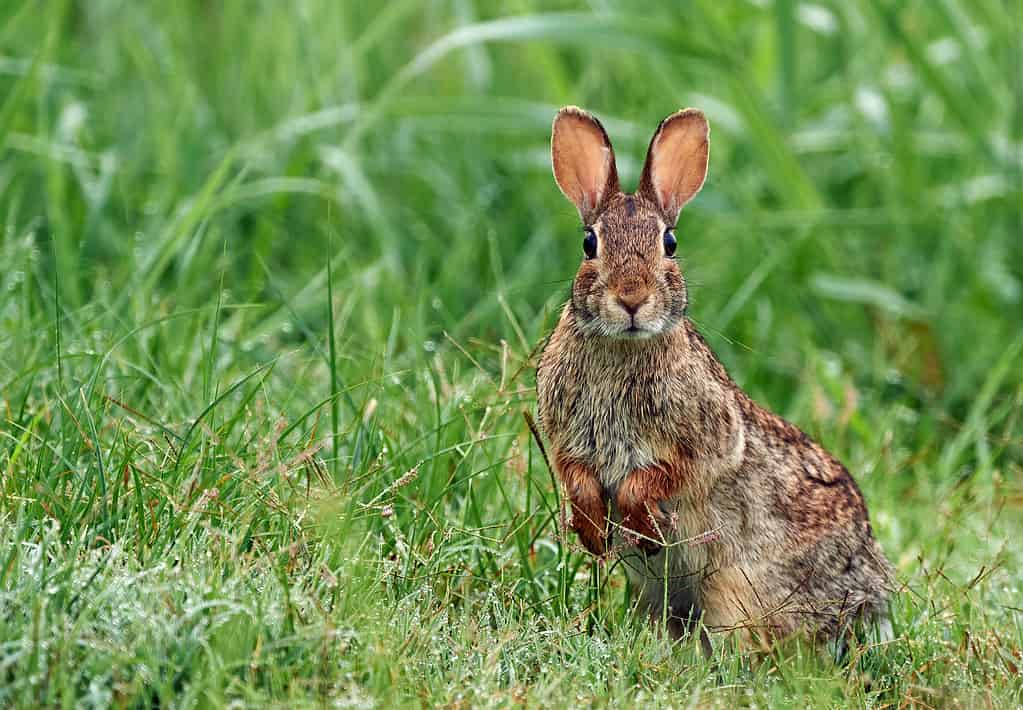
Connecticut is full of cottontail rabbits, they occur in every corner of the state, and their numbers are increasing each year.
©ArCaLu/Shutterstock.com
Beaver
Connecticut’s beavers inhabit streams, rivers, lakes, swamps, farm ponds, and other wetland areas. Their diet consists of shoots, leaves, twigs, shrubs, roots, and tree bark. Additionally, beavers prefer woody plants like birch, willow, aspen, alder, apple, and ash.
However, if food is scarce, beavers will feed on any tree or plant species. During the summer, they will eat aquatic plants, including pond weeds, water lilies, and other plants like grasses and sedges.
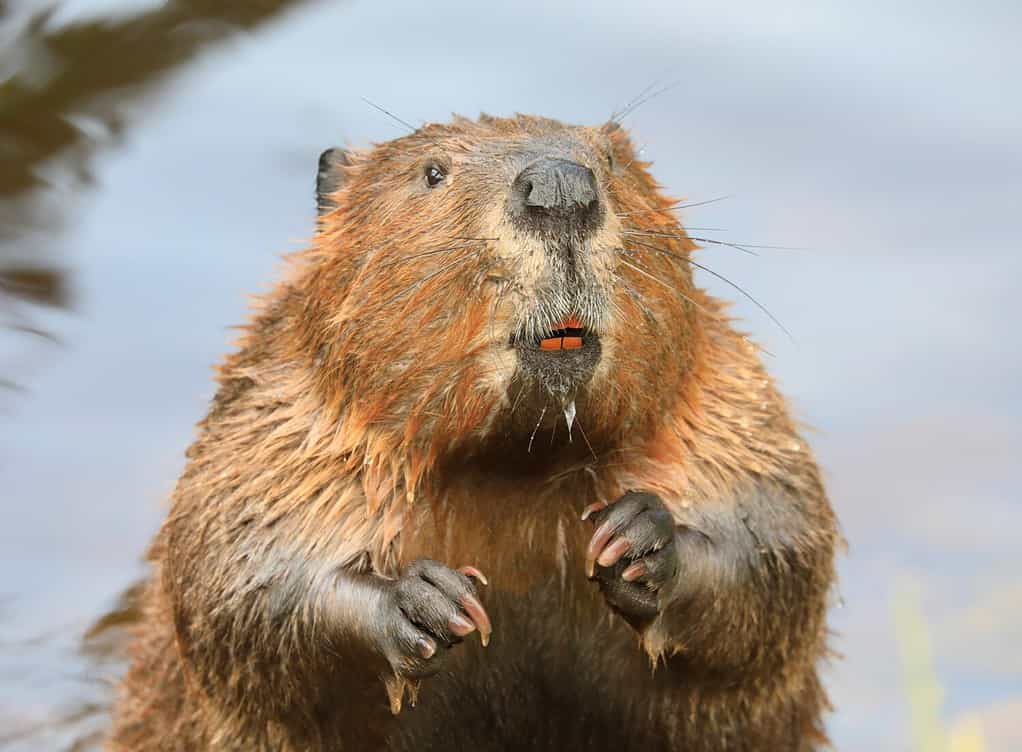
Connecticut’s beavers inhabit streams, rivers, lakes, swamps, farm ponds, and other wetland areas.
©Vlad G/Shutterstock.com
Black Bear
The black bear population in Connecticut is increasing, even in highly populated urban areas. They occur throughout the state, and sightings are common. In fact, there have been sightings in around 140 of Connecticut’s 169 towns. Additionally, the state reported over 6,000 sightings in 2016, and since then, their population numbers have continued to grow.
Ideal hotspots for these bears depend on proximity to suitable habitat and den sites and food availability. Therefore, towns like Simsbury are incredibly appealing to black bears, thanks to its wetlands. Once spring arrives, these wetlands are essential to emerging plants, which are one of the bears’ few available foods at that time.
While bears generally avoid people in the wild, food sources near homes eventually entice them, and they become accustomed to people and noises, like dogs barking.
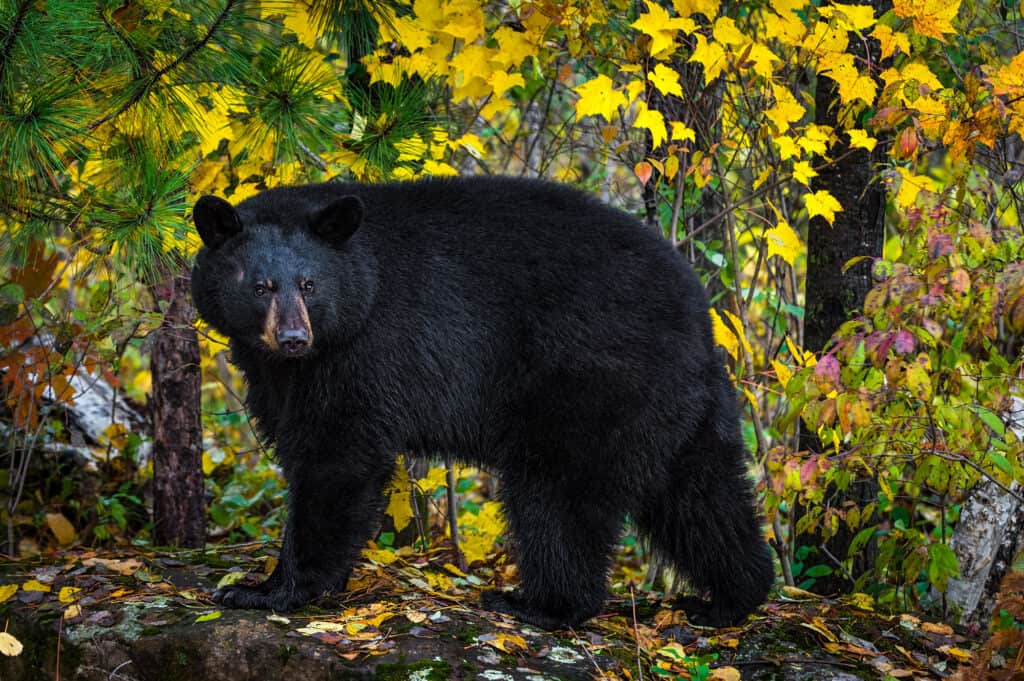
The black bear population in Connecticut is increasing, even in highly populated urban areas. They occur throughout the state, and sightings are common.
©Holly Kuchera/Shutterstock.com
Raccoon
Raccoons are major pests in Connecticut. Unfortunately, the state’s ever-growing population has benefited these savvy critters. Large human populations provide raccoons with easily accessible food sources, like gardens, garbage, and bird feeders. They thrive in a large variety of habitats because they are so adaptable.
Therefore, they are abundant in Connecticut’s rural, urban, and suburban areas. Raccoons are mostly active at night and relatively quiet. However, they may knock over a trash can or two. They will den in rock crevices, tree cavities, and brush piles during winter. But, when they inhabit urban or suburban areas, they also den in chimneys, attics, buildings, sheds, crawl spaces, and decks.
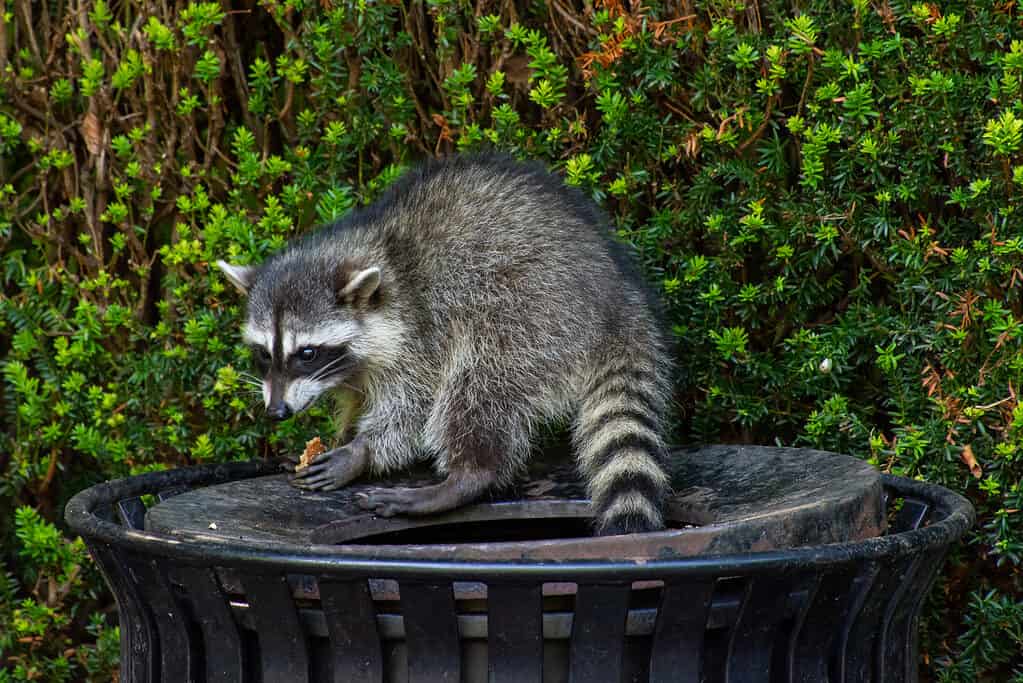
Raccoons are major pests in Connecticut. Unfortunately, the state’s ever-growing population has benefited these savvy critters.
©kingma photos/Shutterstock.com
The photo featured at the top of this post is © Wangkun Jia/Shutterstock.com
Thank you for reading! Have some feedback for us? Contact the AZ Animals editorial team.







